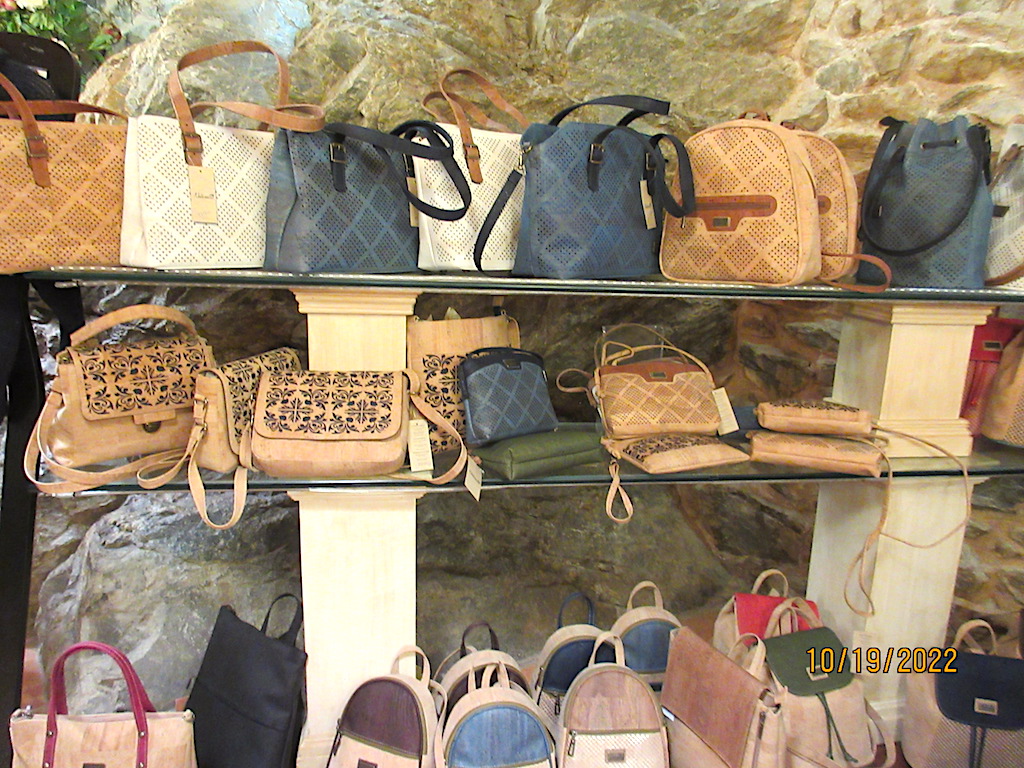






On this day we took a bus about 45-minutes from the ship to the fortified hill town of Figueira de Castelo Rodrigo, a national monument in the municipality of Guarda in Portugal. The drive took us past miles of beautifully terraced hillsides of grapes, olive and almond trees. The terraces have been created over the centuries by hand using stones gathered from the land and dry-stacked into beautiful walls. The trees only get rain water, are not irrigated and they must be hand-picked due to the steep hillsides.
This Portuguese town along the border with Spain has a population of approximately 6,500 inhabitants. We traveled further up the hill to the old castle ruins where only about 55 residents reside. We took a brief walking tour to see the city walls, the 16th century pillory (wooden framework with holes for your head and hands in which an offender was imprisoned and exposed to public ridicule) and the local Parish Church of Castelo Rodrigo.
The Parish Church was founded in 1192 by a brotherhood of Hospitaller friars in order to assist with the pilgrims on their way to Santiago de Compostela. The church was originally built in the Romanesque style although later enlarged and enhanced. The wooden altar with gold embellishments dates back to 1686 while the coffered ceiling decorated with paintings of saints is from the 18th century. It is a very dark church and not well lit as to preserve the interior. There is a small statue of St. Sebastian that is now recognized by the LGBTQ+ community to be their patron saint.
It is thought that the medieval castle now in ruins was built in the sixth century by Alfonso IX of Leon as part of his defensive line. The name of the castle and the surrounding village comes from the name of Count Rodrigo Gonzalez de Giron who was responsible for the defense of the castle. The fortress, walled fence, moats and 13 turrets were rebuilt in the 14th century. The ruins have been listed as a National monument since 1922.
While in town we were introduced to the culinary culture in the area with a tasting of some of the local products. Candied almonds with both savory and sweet flavors are popular as well as local wines, liqueurs and cheeses. We sampled almond liqueur with a sparkling soda water which was very refreshing. Also available in the shops were many purses, shoes and jewelry made from the local cork.
The downside of our outing today was that it was raining and extremely windy on the hillside. We had umbrellas but with the strong winds they were not keeping much of the rain off of us.
Back onboard our vessel we set sail down river and were given a basic lesson in the Portuguese language. The language is similar in some instances to Spanish but mostly much more complicated than Spanish or English. We also had a demonstration on the making of a classic Portuguese egg pastry called the Pasteis de Nata. Along with the pastries we were introduced to the Portuguese tea traditions, tea drinking and tea production. The pastries were delicious although doubt I would ever try to make them myself.
By 11:00am we set sail on the UNESCO listed Douro River lined with beautiful terraced hillsides of vineyards, olive orchards and rural estates known as quintas. We had intermittent showers but the narrow river lined with steep hillsides was breathtaking. We transited through the Pocinho and Valeira locks on this day with 72 and 109-foot drops. We docked in the small town of Pinhao about 7:00pm for the night.
Dinner included an oxtail appetizer, fish or pork cheek entrée, spinach soup, lemon cake. The food has been plentiful and good but not extraordinary. After dinner in the dining room we enjoyed Luis, the ships pianist who played a wide variety of music from Portuguese songs to American Classics.
